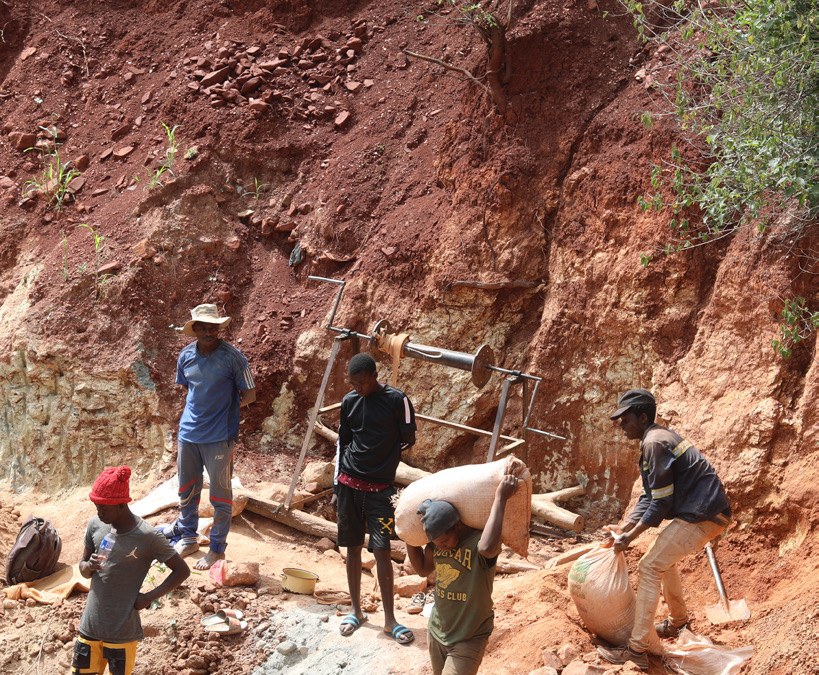Globally economies are beginning to integrate. The rise in urbanisation, economic and population growth has resulted in increased exposure of the rural community to more investments in mining operations. There is an increased demand for raw materials and commodities which has in turn increased the mining environmental footprint. Mining operations require intensive water usage, vegetation clearance and land usage which result in significant environmental impacts. These environmental externalities can be soil erosion, acid mine drainage, deforestation, leakage of chemicals and sedimentation to mention a few. Poor communities in developing countries often interact with large investors because the arrival of external investments often provides a way out of poverty due to employment opportunities and infrastructural development. These opportunities are often temporary if the mining operations are detrimental to the once uncontaminated and preserved environments that the communities once depended on.
Mining companies have been becoming more aware of the need to build and improve relations with their surrounding communities in which they operate. Ernst and Young consulting company classified the ‘Social Licence to Operate’ SLO as the greatest business risk facing mining companies in 2019 up to 2020. Scientific research in mining has proven that there is an increased need of knowledge surrounding socioenvironmental sustainability dynamics linked to increased mining activities in developing countries.
The surface of the earth is changing rapidly, we are living in a time of extensive global change which is being driven by human development. These rapid changes have opened the earth up to new risks which are present in multiple systems. The greater challenge lies in predicting these threats to the environment and to human health. Current risks exist on multiple scales from mutating microbial pathogens, chemical pollutants, altered climate and ecosystems and they need to be identified and monitored. According to the European Commission there is support for environmental monitoring programmes, natural disasters and hazards, survey of environmental pollutants, shortage of food and water supplies, climate change, improved detection of emerging environmental issues.
When we assess the issue of emerging threats in the mining sector, there is a phenomenon of the ‘Known unknowns’ and it depicts the risks we know exist but do not fully understand neither can we accurately predict them. Threats can arise from entirely unknown hazards. Unknown hazards cannot be predicted because there has been no prior experience for their occurrence. These types of threats or risks are difficult to identify because of their speculative nature and potential impact beyond the normal everyday experience and if undetected can cause catastrophic incidents. The ‘unknown unknown’ concept has become widely used in risk assessments.
Different types of environmental hazards exist in mining:
Open pit mining
Open pit mining is damaging to the environment because minerals are often available in small concentrations only and this increases the quantities of minerals that need to be mined. There are environmental hazards present in every stage of the open pit mining process. Open pit exposes hardrock that has been unexposed for many years and when crashed they produce toxic radioactive material, metallic dust and asbestos like minerals.
Underground Mining
Underground mining releases toxic chemicals into groundwater and the soil. These toxic chemicals contaminate the water which in turn pollutes the surrounding environment. These chemicals are heavy metals such as mercury (Hg), cyanide (Cd), arsenic (As), cadmium (Cd), chromium (Cr) and lead (Pb). Underground mining operations causes sedimentation in nearby rivers because of hydraulic pumps and suction dredges. Ecologically valuable topsoil is removed by blasting with hydraulic pumps and makes it difficult for vegetation to recover. Deforestation leads to the disintegration of biomes and contributes to the effects of soil erosion.
In situ leach (ISL) mining
This type of mining releases significant amounts of radon. The fluids remaining after the leaching process usually have elevated concentrations of metals and radioactive isotopes, posing a significant risk to ground and surface water sources. Alkaline ISL can be an alternative to acid In Situ Leaching to extract uranium. Alkaline ISL will result in lower extractions of uranium but will offer advantages for the quality of groundwater after when the mining operations stop. Alkaline ISL therefore has reduced impacts on groundwater quality.
Heap Leaching
Ecosystems and the human health of populations within the vicinity of heap leaching mining operations can be affected by heap leaching fluids released into the environment. Failure to keep the process solutions within the heap leaching circuits causes a lot of environmental pollution.
Brine Mining
Existing ecosystems are disrupted by drilling and transport of brine solutions. Well casings and storage tanks can also corrode due to high salinity of the solutions that they are exposed to. This will cause leaks and pollution of groundwater water and other nearby water sources.
In conclusion, the United Nations member states set 17 Sustainable development goals. Mining Companies can contribute to global environmental sustainability by taking a front role in driving these SDGs. This will in turn help the companies in addressing emerging threats in the environment and other sectors as well.



